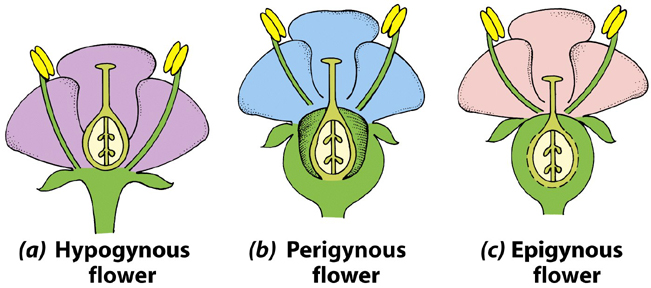CBSE Class 11 Biology Chapter 5 Revision Notes Part 3
Chapter 5: Morphology of Flowering Plants Revision Notes Part 3
A flower is the reproductive structure found in flowering plants or angiosperms and is different for every type of plant. The word “flower” comes from the Latin word “Flora,” the goddess of flowers.
What is floral morphology?
A flower, also known as a bloom or a blossom, helps in the reproduction of plants typically by providing a suitable mechanism for fertilizing the egg with the sperm. They may help cross-pollination when the egg is fertilized from sperms or pollen coming from other flowers, or self-pollination when the egg and sperm from the same flower fuse together. Flower morphology is the study of a wide range of paramters such as the arrangement of ovaries and styles, the number of stamens, shapes of petals, number of petals, numbers of styles, number of ovaries, etc. on a flower.
There are four basic parts of a flower:
- Sepal: The outermost part of the flower which encloses the bud and is leaflike and green in appearance. It protects the developing bud within and serves as a support for the blooming petals. It is also known as the calyx.
- Petal: The soft, visibly colored, and most prominent parts of a flower are called the petals. They possess a distinct scent that attracts the pollinators such as bees. They also protect the other reproductive parts within the flower. The petal is also known as the corolla.
- Stamen: The part of the flower which produces the pollen or sperms is called the stamen. It consists of a slender filament having an anther at its end. The anther produces the pollen from the microsporangia by meiosis. The collective stamen tissue is called the androecium.
- Carpel: This is female reproductive organ of the flower and is made up of the ovary, a style, and a stigma. It is also known as the pistil and is the basic part of the gynoecium. It is called distinct when it is free, and connate when fused. The ovule or egg within the ovary becomes the seed, and the ovary develops into the plant’s fruit. The gynoecium is called monocarpellary when there is only one carpel and polycarpellary when there is more than one carpel. When the carpels in the polycarpellary condition are free, it is called apocarpous, and when fused, it is known as syncarpous. The calyx and the corolla together from the Perianth.
Position of floral parts
The bract is the part from where the flower emerges; the stalk of a flower is called the pedicel, and the swollen upper part of the flower, which is cone or round-shaped, is called the thalamus.
- Perigynous condition is when the thalamus is above forming a cup-shaped structure, the gynoecium is in the center, and the rest of the parts are almost at a similar level at the thalamus rim; the ovary is called half inferior. This is seen in plums, roses, and peaches.
- Epigynous condition is when the ovary and thalamus fuse completely and the rest of the parts come above the fused ovary, and it is called inferior. This is seen in sunflower, guava, and cucumber.
- Hypogynous condition is when the stamens, petals, and sepal are placed under the ovary, superior. This is seen in eggplant, mustard and China rose.
Stamen adhesion
- When the stamens are fused with the other flower parts, it is called the adhesion of stamens.
- Epiphyllous is when the stamens are attached to the petals, as seen in lilies and onions.
- Gynandrous is when the stamens are attached to the gynoecium either at the anther or throughout, as seen in Calotropis.
- Epipetalous is when the stamens are attached to the petals of the flower, as seen in potato and tobacco.
What are fruits?
- Ripened and mature ovaries of flowering plants are called fruits.
- Parthenocarpic fruits are formed without fertilization, and this is called aspermy or parthenocarpy. This is seen in pineapple, bananas, etc., and such plants do not have seeds.
- Fruits in which the ovary participates in the fruit formation are called true fruits or the eucarp.
- False fruits or pseudocarps are those in which other parts of the flower are involved in the formation of fruits. For example, in the formation of some fruits like pear, apple, figs, etc., the thalamus is involved and in the formation of pineapple, the calyx participates.
Parts of fruits
- There are two main parts in fruits called the seed and the pericarp (wall of the fruit).
- The ovules or eggs get fertilized and ripened to form the seeds.
- The ovary’s wall develops into the pericarp and may be succulent if it is fleshy or dry if it’s not.
- Fleshy fruits are divided into the outer epicarp, middle mesocarp, and inner endocarp layers.
Sources:
Morphology of Flowering Plants. https://ncert.nic.in/textbook.php. Accessed 18 Dec, 2021.
]]>


